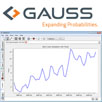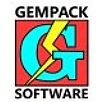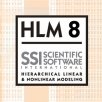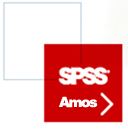產品目錄
產品目錄
DynoChem 是Scale-Up Systems公司開發,世界領先的醫藥、化工領域工藝開發和放大計算軟體。DynoChem使用Excel作為數據錄入界面,用戶可輕鬆操作的同時調用系統強大的計算擬合功能完成放大工藝設計。這款軟體貫徹質量源於設計(Quality by Design)的先進理念,促進了過程開發中不同部門之間的合作,提高了科學家和工程師的研發和生產效率。目前,DynoChem已經在全球多家領先的製藥公司、農業化學品公司和CRO公司中使用,並成功在數百種API反應、後處理和分離純化中進行了實際應用。
應用領域
實驗室級別反應放大優化
新API反應步驟在多用途反應容器中的一次成功放大
流動化學方案
後處理和分離步驟的放大預測
結晶過程中溶劑和反溶劑的選擇
混合和傳熱計算
汽-液平衡和汽-液-液平衡計算
成熟工藝的持續改進
EQS 是廣泛使用的結構方程模型(Structural Equation Modeling)的軟體,具有易於使用的特性。用戶可使用簡單的數據錄入與輸出操作就可進行統計檢驗和繪圖工作。EQS以便利的數據處理和統計預先處理為特色。
EQS 提供研究者和統計學家一個用於結構方程式模型的簡易工具,其功能包含多元迴歸、驗證性因子分析、結構化平均分析、因徑分析和多群體比較等等。使用過EQS的學者一致認同EQS提供完整且簡單操作接口。使用EQS,不必具備任何矩陣代數的知識就也可輕易操作。
更新介紹
» EQS’ comprehensive data management capabilities allows users to work with data without having to use other programs such as SPSS®. Imports SPSS files.
» EQS tests the full range of SEM including latent regression, confirmatory factor analysis, structured means, multiple population, latent growth curve, multilevel analysis, correlation structure & categorical data models.
» EQS’ improved DIAGRAMMER makes model setup easy without use of command language or knowledge of matrix algebra! Yet, commands can be used and are useful for new features.
» EQS is preferred by thousands of researchers worldwide providing them with a wide range of easy to use statistical and data exploration tools.
» Arruda-Bentler Regularized GLS Test
» Jalal-Bentler Monte Carlo Test
» Nesting and Equivalence Tests
» Automatic Difference Tests
» Exploratory Factor Analysis
» (with Parallel Analysis & Bifactor Rotation)
» Smoothing a Correlation Matrix
» New Formula for Robust RMSEA
» Satorra-Bentler Mean and Variance Adjusted Test Statistic
» Robust Statistics for Clustered Data
EViews 因為其創新、易於使用的界面,可提供學術研究者、公司、政府機關及學生獲得強有力的統計、預測和建模工具。EViews 是結合強大功能和易於使用的套裝軟體,使用於時間序列、橫斷面或縱向數據 。藉由EViews,你可以快速有效地管理你的數據,進行統計分析和計量、生成預測或模擬測試,並生產出高質量圖表或列入其他應用 。
EViews 有兩種版本,標準版(Standard)和企業版(Enterprise),企業版版本中支援ODBC和幾個商業專有數據格式數據和資料庫,介紹如下。
EViews 應用領域
應用經濟計
量學
總體經濟的研究和預測
銷售預測
財務分析
成本分析和預測
蒙地卡羅模擬
經濟模型的估計和模擬
利率與外匯預測
更新介紹
EViews 14 offers more of the power and ease-of-use that you've come to expect. Enhancements include:
JDemetra+ seasonal adjustment
Facebook™ Prophet
Quantile ARDL estimation
MIDAS GARCH estimation
Elastic net enhancements
Outlier Detection
Boosted Hodrick-Prescott Filter
Tests for series trends and break points
Tests for financial bubbles
Local projection impulse response (LPIRF) analysis
Numerous improvements to VAR and impulse response confidence intervals
And much more!
FMEA Studio 靈活的 FMEA 軟體
在 Excel 中更快、更簡單
繼續您的 FMEA 風格,但使用 FMEA Studio 在 Excel 中更快、更輕鬆
節省您的寶貴時間
比以往更快、更輕鬆地無縫建立和編輯 FMEA、流程圖和控制計劃。
簡化 FMEA 的複雜性
FMEA 方法可能很複雜,但使用 FMEA Studio,您可以輕鬆防止錯誤並確保準確性。
使用者友好且協作
FMEA Studio 與 Excel 無縫集成,提供使用者友好的介面,可輕鬆建立、編輯和共用文件。
需要更簡單、更快速的FMEA 軟體嗎?
讓我們嘗試一下 FMEA Studio,看看為什麼它可以讓您的 FMEA 變得更簡單和靈活
力量與靈活性的平衡
FMEA Studio 具有全面的功能,可滿足您的所有 FMEA 要求。
符合 FMEA 標準
無論您遵循 IEC 60812、AIAG FMEA 手冊或新的 AIAG/VDA FMEA 手冊,FMEA Studio 都能確保符合您所依賴的指南。
可定制以滿足您的獨特需求
使用 FMEA Studio,您可以自訂模板結構、外觀和風險評估方法來滿足您的特定要求。
GAUSS 是一個功能強大且有運算快速矩陣編程語言的數值統計軟體,被科學家、工程師、統計學家、生物學家、經濟學家和金融分析師所廣泛使用,並且廣受好評。
GAUSS 宣稱,「GAUSS是你所需要唯一的計算工具」。GAUSS本身是高階的矩陣語言,內鍵多個數學、統計、資料處理函數,並且提供了各種模組,可以幫 助各領域的使用者進行複雜、大規模的數值演算與資料分析。在財務、計量經濟的領域,配合許多特殊的模組,使得GAUSS成為是財經研究領域裏最佳的選擇。
GAUSS軟體可設計運算密集的任務,是一個適合沒有要求用C或FORTRAN程式的研究者,但結果發現大多數的統計或數值的"套裝軟體",不夠靈活或強大,不足以對大的問題進行複雜分析或工作 。
無論數學工具或編輯語言程式,你現在可以使用GAUSS,您會發現可大大增加你的生產力!
澳洲 Victoria University 大學研發的GEMPACK (General Equilibrium Modelling PACKage) 軟體,是一套多用途的經濟建模套裝軟體,特別適用於一般和局部均衡模型,並可以處理廣泛的經濟行為。GEMPACK 可以建立並運用可計算一般均衡模型(computable general equilibrium, CGE, model),並且具有求解過程簡單、可變動模組,及適用於政策分析等特點。
該方法在經歷 60 年代的短暫沉寂後,自90 年代開始,迅速成為政策分析的重要方法,廣泛應用於貿易政策、稅制改革、環境能源、產業政策 等方面的分析。在國外,對這種分析方法的關注正呈上升趨勢,一些政府機構、科研單位和高等院校正努力加強這方面的研究。
GEMPACK使建模者能夠求解非常大型的非線性方程式。
一旦模型方程式被使用一種類似符號的語言指定後,建模者就可以擺脫求解過程的計算細節。
GEMPACK軟體計算經濟模型的準確的解答。
所有的功能(基礎和高級)都有完整的文字說明、詳細的指令(包括許多手工操作示例)幫助新用戶快速入門。
GEMPACK Windows套裝程式可以幫助您視覺化、探索編碼、資料和結果。
GEMPACK 包含了強大的用於求解recursive-dynamic 和 fully-intertemporal 的能力
當出現問題會提示您發送回饋。
GEMPACK是非常有用的教學工具。
GEMPACK被超過90個國家的超過400個組織使用。
GEMPACK會不斷地持續改善。
新版介紹
Release 12.1 includes new automatic homogeneity testing, further improvements to LU decomposition performance, faster GEMSIM, enhanced searching in the Tabmate editor, improvements to ViewHAR and ViewSOL and faster start times for graphical interface (GUI) programs. As well many small bugs introduced in release 12.0 have been fixed.
Automatic Homogeneity Testing
Most CGE models are homogeneous degree zero in prices and quantities. The automatic homogeneity testing is one method for checking the homogeneity, real or nominal, of a model. Two kinds of tests are available, a pre-simulation homogeneity check of equations and a homogeneity simulation for testing simulation results. In both cases results of the test are summarized for the user.
To prepare a model for automatic homogeneity testing the user:
Specifies the VPQType (Value, Price, Quantity, None or Unspecified) of variables. Several methods are provided which minimize the effort required by the user.
Specifies the original level (ORIG_LEVEL=...) for ordinary change variables.
Includes one of the following commands in a CMF file
homogeneity check = real ;
homogeneity check = nominal ;
homogeneity simulation = real ;
homogeneity simulation = nominal ;
ViewHAR and ViewSOL improvements
when displaying mappings ViewHAR now shows elements of the domain and codomain sets
in ViewHAR keyboard combinations allow the user to select active sets (CTRL + LEFT, CTRL + RIGHT) and elements of active set (CTRL + UP, CTRL + DOWN)
new menu items in ViewHAR and ViewSOL open explorer or CMD exe in current folder
in ViewHAR and ViewSOL, while viewing the Contents screen or data, typing activates a quick search in the current column
CTRL + X copies the contents of a single cell from ViewHAR and ViewSOL
ViewSOL...
GeneXproTools 是一款靈活的預測建模工具,其設計有功能查找、logistic回歸、分類、時間序列預測和邏輯合成等功能。GeneXproTools非常方便使用,只要您輸入數據資料、點擊滑鼠,使用GeneXproTools系列模板為你設計模式,將能夠立即生成一個模型。本軟體有四個版本GeneXproTool-Standard、Advanced、Professional及Enterprise。
GeneXproTools可處理數以萬計的變數的資料集,並且可以毫不費力地找出顯著點及其相互關係。GeneXproTools也是非常平易近人的應用程式,其簡化所有類型資料的存入,包含原始的文字檔資料庫和Excel試算表。您不知道需要精通任何程式設計語言以建立精確和複雜的模型。 GeneXproTools提供所有必要功能包含:負荷訓練和測試、生成模型、執行結果的統計分析,並應用該模型產出新的分析資料。此外,GeneXproTools可以幫您轉換成多達16種主流程式語言,如:Ada、C、C++、C#、Fortran、Java、Java Script、Matlab、Pascal、Perl、PHP、Python、Visual Basic、VB.Net、Verilog及VHDL等等。
高品質模型
GeneXproTools產出的模型非常準確且強大,可以同時觀察和測試十二個樣本或使用自己的數據進行運算。在試算模式下,GeneXproTools可讓您載入數據、建立模型,並審查這些模型的統計分析。樣本分析沒有設定任何限制,因此可以探索和學習完整的流程,從模型結構和編碼,到模型評估和模型簡化。
無限的變量和樣本
GeneXproTools可以處理任何樣本和變量,除非受到電腦硬體資源的限制。使用新型的電腦可以不費吹灰之力處理一到兩億以上的儲存格。新的文件格式,可以非常有效率的在幾秒鐘內載入數據並且存儲。
方便使用
GeneXproTools是迄今為止市場上最方便的預測建模軟體,簡單的嚮導和概念,僅需了解計算機基礎知識,即可分析複雜的資料。可以幫助世界各地的使用者作出突破性的發現和創造非凡的新產品,因為GeneXproTools為任何研究領域提供理想的建模平台。GeneXproTools不僅可以應用再簡單數據分析中,還包含了建模平台的所有優點。正如知識的工具的進展,你會發現GeneXproTools將會增加你的工作成效,並進一步改善的工作結果。
GenStat 是個數據分析工具,也是統計軟體。事實上,GenStat 可以被稱為「我工作中不可或缺的幫手」。GenStat 是一款功能強大的統計系統軟體。靈活而完全交互式系統,最先進的圖形化工具,友好的圖形化用戶界面,以及強大的統計學程式編製功能。GenStat幫助你處理工程上的數據統計,科學研究中的數據分析...等。GenStat 具有悠久的成功歷史,並且不斷更新發展,使其活躍在統計學技術的最前沿。被廣泛應用於學術界、科研探索以及工業領域。
GenStat 是透過一個視窗選單介面讓初學用戶便於使用的全面化統計系統, 也可透過一個強有力的命令語言介面讓有經驗的用戶有更多的權力和靈活性。
完全互動式系統,最先進的圖形化工具,友好的圖形化用戶介面,還有強大的統計學程式編制功能。GenStat 具有30年悠久的成功歷史,並且不斷更新發展,使其活躍在統計學技術的最前端。GenStat的主要優點之一是已經透過培養訓練統計員重複被測試的可提供的統計方法的巨大的範圍,穿過很多應用和訓練。
basic statistics 基本的統計
design and analysis of designed experiments 實驗設計
analysis of linear and generalized linear mixed models
microarray analysis
regression (linear, nonlinear and generalized linear)
hierarchical generalized linear models
spatial analysis 空間分析
multivariate analysis techniques 多變量的分析技術
time series 時間序列
statistical process control methods 統計過程式控制制方法
survival analysis 生存分析
sample size calculations and resampling methods
更新介紹
23 new procedures
4 new functions
Analysis of variance for censored data (ATOBIT, AUTOBIT)
Analysis of censored regression analyses with Normal, gamma and negative binomial data (RGTOBIT, RNTOBITRNBTOBIT)
REML analysis of field trials using a two-dimensional spline model (V2DSPLINE)
Design and analysis of sets of n-of-1 trials (N1ANOVA, N1DESIGN, N1PLOT, N1SIMULATE, N1TTEST)
Negative binomial probabilities and random numbers (CLNEGATIVEBINOMIAL, CUNEGATIVEBINOMIAL, EDNEGATIVEBINOMIAL, PRNEGATIVEBINOMIAL, ELNEGBINOMIAL, EUNEGBINOMIAL, GRANDOM)
Gamma distribution expected values (ELGAMMA, EUGAMMA)
Improved default settings for the symbols, colours and line-styles used in graphs
At the start of each job, the server now loads the default graphics environment that is specified in the computer’s Registry, and that Registry setting can be accessed and defined (GET, SET)
Heatmaps (DBANDCOLOURS, DHEATMAP, FHEATCOLOURS)
Graphical displays of data in a table, so that you can create PDF reports that include graphs (DPRINT)
HML 多層次線性分析軟體 (Hierarchical Linear Modeling 階層線性模型分析)
HLM 可以讀取 SPSS、SAS、SYSTAT 及 STATA 等統計軟體的檔案。
回歸分析雖是經濟計量研究中常用的研究方法,但是實際研究中的數據往往具有層次結構的特點,如對於不同地區個體經濟發展指標的測量,個體嵌套於地區。對於這類數據的分析往往需要考慮更高層次如區域的特徵。
在社會研究等領域,研究數據往往具有層次結構。個別學科可歸類或排列級結成本身素質影響的研究。在這種情況下,個人可以視為一級學習單位和它們排列集結的是2級單位。這可能進一步擴大,2級單位組織起來而成為另一些單位為第三層次。這方面的例子俯拾皆是,如教育(學生在1級,學校在第2級、學區是第3級)、社會學(1級、街道級2)。顯然,這些數據的分析需要專門的軟體。階層線性和非線性模型(也稱多階層模型)已經開發出研究的關係,以便在任何層面的單一分析,而沒有忽略在各層次的變異。
HLM 常用於社會科學和行為科學,因為它常有巢狀結構 (Nested Structure)的資料,因此需用次模型 (Sub-Model)或階層模型(Hierarchical Model),HLM 就是設計來專門解決此類問題的,HLM 提供的模型包括2-level models、3-level models、Hierarchical Generalized Linear Models (HGLM) 和 Hierarchical Multivariate Linear Models (HMLM)等。
系統需求
Compatible with Windows 7, 8, 10.
友環為 IBM 軟體代理商夥伴
IBM® SPSS® Amos 容易執行結構方程式建模
IBM® SPSS® Amos 可讓您指定、估計、評量和呈現模型,以顯示變數間的假設關係。與使用標準多變量統計資料技術相比,此軟體可讓您建立更精確的模型。使用者可以選擇圖形使用者介面,或使用非圖形、程式介面。
SPSS Amos 可讓您建立反應複合式關係的態度和行為模型。此軟體:
提供結構方程式建模 (SEM) — 此建模方式不僅易於使用,而且可讓您輕鬆地比較、確認和精簡模型。
使用貝氏分析 (Bayesian Analysis) — 改善模型參數的估計值。
提供各種資料插補法 — 以建立不同的資料集。
AMOS提供強有力和容易使用的架構方程式模型化(SEM) 軟體。與單獨使用標準多元統計或者多個回歸模型相比,Amos可建立更實際的模型。 因為圖形介面而模型是路徑圖,所以可在圖解內進行,不需要編寫程式。
比起您常用的多變量分析或多項式迴歸,AMOS讓您建立更多的實際可行的模型。您也可以輕鬆的將AMOS與SPSS的工作流程結合。
建立結構方程模型更準確,比標準型號採用多元統計直覺拖放功能
螢幕顯示結果的模型
使用繪製工具來建立路徑圖,而不是撰寫方程式或輸入指令。
最適合您資料的模型
提供探索技術,例如結構方程式模型規格搜尋,以協助從大量候選者中選擇模型。
非圖形式建模
為程式設計師和非程式設計師提供簡易方式,以指定結構方程式無需繪製路徑圖。
尋找非預期的關係
在您找到適合的模型之後,SPSS Amos 路徑圖會顯示變項關係的強度。
支援您的研究
延伸標準多變量分析方法,包括 迴歸、因素分析、相關性和變異數分析。
AMOS 適用於各種科研應用
* 心理學 - 發展模式,了解藥物,臨床、藝術療法影響心情
* 醫療保健 - 研究證實這三項變數 - 自信,儲蓄或研究 - 預測最佳醫師支援非專利藥品
* 社會科學 - 研究社會經濟地位、組織成員及其它因素影響投票行為的差異和政治接觸
* 教育研究 - 評估訓練專案的結果來確定影響結果及課堂效益
* 市場研究 - 製作模型來評估影響客戶行為的新產品銷售
* 科研機構 - 研究與工作有關的問題是否影響工作滿意
友環為 IBM 軟體代理商夥伴
IBM® SPSS® Statistics 為分析資料的強大系統。SPSS Statistics可以從幾乎所有的檔案類型中擷取資料,然後利用這些資料來產生表格化報告、圖表,以及分配與趨勢的統計圖、敘述統計和複雜的統計分析。
Statistics Base 提供多項基本分析與報告的統計程序,包括個數、交叉表與敘述統計、OLAP 多維度報表,以及編碼簿報告。其也提供多項維度縮減、分類與分段技術,例如因子分析、集群分析、最近鄰法分析,以及判別函數分析。此外,SPSS Statistics Base 也提供許多種演算法,以用於比較平均數與預測技術,例如 t 檢定、變異數分析、線性迴歸以及次序迴歸。
進階統計量重點放在臨床實驗與生物醫學研究中常用的技術。其中包括用於一般線性模式 (GLM)、一般混合模式、變異成份分析、對數線性分析、次序迴歸、保險統計生命表、Kaplan-Meier 存活分析、以及基本與延伸式 Cox 迴歸的程序。
自助法方法可獲得可靠的標準誤估計值和如下列各種估計值的信賴區間:平均數、中位數、比例、odds 比率、相關係數或迴歸係數。
類別執行最適尺度程序,包括對應的分析。
複合樣本可讓調查、市場、健康和公眾輿論的研究人員,以及使用樣本調查方法的社會科學家,將複合樣本設計納入資料分析中。
Conjoint 提供實際可用的方式,測量各個產品屬性如何影響消費者和一般國民的偏好。有了 Conjoint,可以簡易地在一組產品屬性的條件下,測量各產品屬性的平衡取捨—,就像消費者在決定是否購買時經常作的考量。
自訂表格可建立各種簡報品質的表格式報表,包括複雜的行列表格以及複選題資料的顯示 。
準備資料提供資料的快速視覺快照。提供功能套用驗證規則,挑出無效的資料值。您可以建立會標示超出範圍之數值、遺漏值,或空白數值的規則。您也可以儲存會紀錄個別違規,和每一個觀察值之違規總數的變數。也提供一組預先定義的規則,讓您進行複製或修改。
決策樹狀結構可建立樹狀結構式分類模式。它會根據自 (預測值) 變數的值,將觀察值分成組別,或依變數 (目標) 的預測值。這個程序會提供用於解釋與確認分類分析的驗證工具。
直效行銷運用專為直效行銷設計的技術,可讓組織確保其行銷方案能發揮最大效益。
精確檢定可在小量或分配極不平均的取樣所造成之一般檢定不精確時,用來計算統計檢定的精確 p 值。本選項只能在 Windows 作業系統上使用。
預測使用多重曲線填入模式、平滑模式、以及估計自動迴歸函數的方法來執行廣泛的預測與時間數列分析。
遺漏值描述遺漏值的形式、估計平均數及其他統計量,以及插補遺漏觀察值的數值。
您可以使用 神經網路,以產品需求預估作為價格和其它變數的函數,或是根據購買習慣和人口統計所作的客戶分類,來做出商業決策。神經網路是非線性資料建模工具。它們可用來將輸入和輸出間複雜的關係建成模式,或找出資料中的樣式。
迴歸提供不適用於傳統線性統計模式的資料分析技術。其中包括用於 probit 分析、logistic 迴歸、權重估計、二階最小平方迴歸、以及一般非線性迴歸的程序。
Amos (動差結構分析) 使用結構式方程式模型,以確認並解釋推動行為背後包含的態度、感覺及其他因子的觀念模式
Latent GOLD is a powerful latent class and finite mixture program with a very user-friendly point-and-click interface (GUI). Two add-on options are available to extend the basic version of the program.
The Advanced/Syntax add-on enables more control for advanced users via use of a Syntax command language including intuitive LG-equations™. This add-on also contains more advanced GUI modeling features such as Latent (Hidden) Markov and Multilevel models.
The Choice add-on allows estimation of discrete choice models via the point-and-click interface. When obtaining both the Choice and the Advanced/Syntax add-on, various advanced choice models can be estimated and the Syntax can also be used to further the customize discrete choice models.
LatentGold最主要的功能為:
潛類聚類分析(latentclass clusteranalysis)
潛類因子分析(latentclassfactor analysis)
潛類回歸模型(latent classregression)
Basic version Includes GUI for
LC Cluster
Latent GOLD®'s cluster module provides the state-of-the-art in cluster analysis based on latent class models. Latent classes are unobservable (latent) subgroups or segments. Cases within the same latent class are homogeneous on certain criteria (variables), while cases in different latent classes are dissimilar from each other in certain important ways.
The traditional latent class model can be used to handle measurement and classification errors in categorical variables, and can accomodate avriables that are nominal, ordinal, continuous, counts, or any combination of these. Covariates can be included directly in the model as well for improved cluster description.
Latent GOLD® improves over traditional ad-hoc types of cluster analysis methods by including model selection criteria and probability-based classification. Posterior membership probabilities are estimated directly from the model parameters and used to assign cases to the classes.
Discrete Factor (DFactor)
A DFactor model is often used for variable reduction or to define an ordinal attitudinal scale. It contains one or more DFactors which group together variables sharing a common source of variation. Each DFactor is either dichotomous (the default option) or consists of 3 or more ordered levels (ordered latent classes).
In this way, Latent GOLD®’s factor module has several advantages over traditional factor analysis:
Solutions are immediately interpretable and don’t require rotation
The factors are assumed to be ordinal and not continuous
No additional assumptions are required to estimate factor scores
The observed variables can be nominal, ordinal, continuous, or counts, or any combination of these
LC Regression and Growth
A Regression model is used to predict a dependent variable as a function of predictor variables in a homogeneous population.
Latent GOLD® makes it possible to estimate a regression model in a heterogeneous popu...







.jpg)




